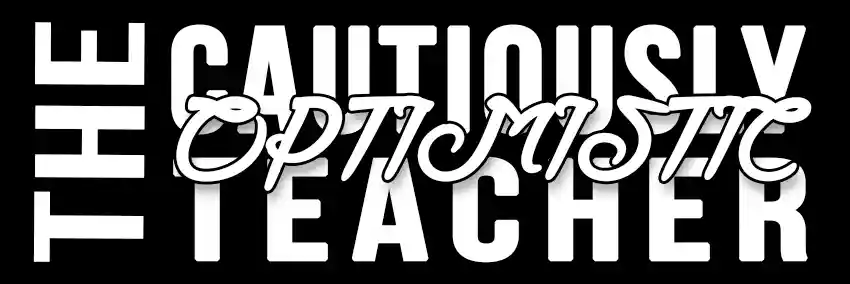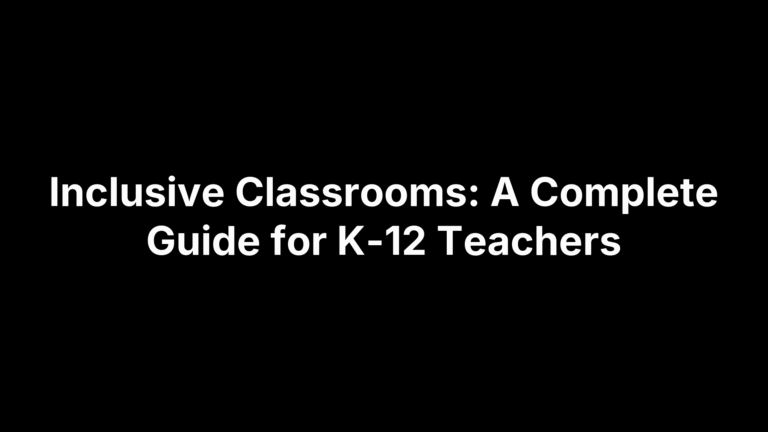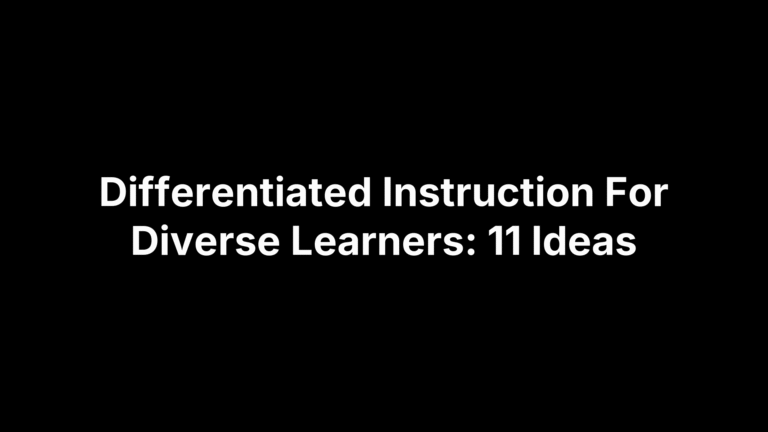25 Proven Classroom Management Strategies for Busy Teachers
Classroom management is simply the art of helping every student know what to do, when to do it, and why it matters. Whether you’re juggling sixth-period energy spikes or early-morning yawns, the 25 strategies below can be put into play as soon as tomorrow—no fancy apps, hours of prep, or expensive behavior programs required.
Use them to reclaim instructional minutes, cut down on side chatter, and set a calm, productive tone that lets learning—not power struggles—take center stage. You’ll spend less time policing and more time coaching, while students gain predictability, ownership, and a healthy respect for one another.
Even teachers with decades of experience tweak their routines every year, so there’s no shame in refreshing your toolkit. The ideas are arranged from cornerstone moves like setting expectations to higher-level techniques such as gamifying transitions, allowing you to cherry-pick a quick win or follow the list sequentially. Grab a notebook, highlight three tactics that match your biggest pain points, and test-drive them this week. When the bell rings Friday, you’ll already have data on what clicks—and a roadmap for layering on the next round of improvements.
1. Establish Clear, Positive Expectations on Day One
Day one sets the tone far beyond the syllabus. When students know exactly what respectful talk, movement, and work habits look like, they can hit the ground running and you can coach instead of referee.
Why This Strategy Works
Clarity strips away uncertainty, a major trigger for misbehavior. Transparent rules and consistent discipline—two of the seven key elements—short-circuit power struggles and reduce anxiety. Students focus on learning because they understand the boundaries and trust you’ll enforce them predictably.
Quick Implementation Tips
- Draft a “We are… / We will…” anchor chart, e.g., “We are respectful learners; we will listen without interrupting.”
- Devote one 45-minute period: 10 min discussion, 15 min teacher modeling, 15 min student role-plays, 5 min reflection.
- Revisit the chart after every long weekend or schedule shake-up to refresh collective memory.
2. Co-Create Classroom Rules With Students
Inviting learners to help write the rules feels risky, yet it is one of the quickest classroom management strategies for building trust. When students see their own words posted on the wall, compliance shifts from “because the teacher said so” to “because we agreed.” The result: fewer power struggles and a community vibe that lasts past October.
Benefits of Shared Rule-Making
- Boosts intrinsic motivation and peer accountability
- Mirrors restorative and authoritative styles that research links to higher achievement
- Teaches civic skills—negotiation, compromise, consensus
- Provides a built-in reason to revisit and revise norms after midyear bumps
Step-by-Step Guide
- Brainstorm (3 min) – Ask: “What helps everyone learn and feel safe?” Record all ideas.
- Categorize (2 min) – Group similar suggestions on the board.
- Vote (2 min) – Each student gets three sticky dots to prioritize favorites.
- Condense (2 min) – Combine top items into four or five positively phrased rules such as “Use kind words.”
- Commit (1 min) – Class signs the poster; snap a photo for digital reference.
- Revisit after breaks—read aloud, celebrate rule success stories, tweak if needed.
3. Teach and Practice Procedures Explicitly
Routines that are taught, not told, turn classrooms into self-running machines. Students who’ve practiced every move—from grabbing materials to lining up—use muscle memory instead of teacher prompts.
Procedures vs. Rules
In the 5 Rs, rules guard rights; procedures guard time. A rule says “be respectful.” A procedure shows how: raise hand, wait, speak. Break a rule—consequence. Botch a routine—practice again.
The “I Do, We Do, You Do” Rehearsal
- I Do (20 sec) – Silently walk the route, narrating only key moves.
- We Do (40 sec) – Class follows with you; pause mid-way to rate volume.
- You Do (60 sec) – Students repeat alone; thumbs-up check, reset until smooth.
Repeat after lunch until the class nails a 30-second benchmark.
4. Model the Behaviors You Want to See
Students copy what they see more than what they hear, so your own conduct becomes the silent curriculum every single school day.
Mirror Neurons in the Classroom
Brain-imaging studies show mirror neurons fire when children observe an action, priming them to replicate tone, posture, and language without conscious effort. When you speak calmly, stand tall, and listen attentively, their brains rehearse doing the same.
Practical Modeling Examples
Capitalize on that wiring by consistently exhibiting the behaviors you expect. Do it until it feels automatic—students will follow suit.
- Pause, make eye contact, nod
- Keep your desk tidy before dismissal
- Disagree with ideas, not people
- Say “please/thank you” every time
- Use calm tone even during chaos
Set a calendar reminder to self-audit once a week.
5. Greet Students at the Door Every Period
A 15-second “good morning, Mia” does more than set a friendly tone—it’s one of the simplest classroom management strategies for curbing off-task behavior before it starts. By acknowledging every learner on the threshold, you reset expectations for the period and collect quick intel on mood and energy levels.
Research Snapshot
Multiple studies of middle- and high-school classrooms report roughly 20 % fewer behavior disruptions when teachers station themselves at the doorway and offer a personal greeting. The routine signals “I see you,” increases time on task, and reduces the need for corrective redirection once class begins.
Variations to Fit Your Personality
- Classic handshake or casual fist bump
- Eye contact plus name: “Afternoon, Jordan.”
- Choice board greetings: wave, elbow tap, or peace sign
- One-word SEL check-in (“1–5 energy?”) as students enter
- Doorway trivia question or riddle for instant engagement
6. Use Consistent, Low-Key Signals for Attention
A silent, recognizable cue saves your voice and stops the “wait until they’re quiet” spiral before it starts. Pick one signal, stick with it, and you’ll shave minutes off every transition—an instant win for time-strapped teachers looking to tighten their classroom management strategies.
Choosing the Right Signal
- Call-and-response: interactive, but noisy if neighboring classes are testing
- Wireless doorbell: inexpensive, yet batteries die at the worst time
- Timer chime: hands-free; can blend into background noise
- Raised hand: always available, may be missed by students facing away
Training Students to Respond
Rehearse three times: teacher models, class echoes, then independent try. Add a 3-to-1 silent countdown so students know how quickly quiet is expected.
| Signal | Student Response |
|---|---|
| Doorbell ding | Voices off, eyes on teacher |
| “Class-class?” | “Yes-yes!” then freeze |
| Hand raised | Finish sentence, raise own hand, go silent |
7. Implement the 2×10 Relationship-Building Strategy
Before another referral lands on your desk, try disarming chronic misbehavior with a dose of daily attention. The 2×10 method works because it shifts the teacher–student dynamic from “manager vs. disruptor” to two humans sharing small, positive moments.
What Is 2×10?
Choose one hard-to-reach student and chat with them for roughly two minutes each day over ten consecutive school days. Avoid lecturing, correcting, or slipping in grade talk—these micro-conversations are purely about connection. Research and anecdotal reports show noticeable drops in off-task behavior after the first week.
Conversation Starters
- “What’s your favorite song right now?”
- “Did you watch the game last night?”
- “Any pets at home causing trouble?”
- “If you could design Friday’s lunch menu, what’s on it?”
Stick to neutral, student-led topics; keep academics and discipline out of the 120 seconds to preserve the safe space.
8. Incorporate Restorative Circles for Conflict Resolution
In restorative circles students sit eye-to-eye, name the harm, and design repair. The approach replaces top-down penalties with shared problem-solving, rebuilding relationships and cutting repeat disruptions—gold for teachers who dread paperwork.
Circle Structure
Chairs form a tight circle, no desks. A single talking piece (marker, stone, plush) moves clockwise; only its holder speaks. Post three norms: speak honestly, listen fully, keep stories private.
Sample Prompts
Begin with feelings: “What happened from your view?” Shift to impact: “Who was affected and how?” Finish with repair: “What needs to occur for everyone to move forward?”
9. Structure Lessons With Bell Ringers and Exit Tickets
Seatwork bookends the period so students enter focused and leave reflective, freeing you to take attendance and spot misconceptions. Together, bell ringers and exit tickets are low-prep, high-impact bookends that tighten pacing without eating into instruction.
Bell Ringers
Post a two-minute task before the bell; it hushes chatter, activates prior knowledge, and primes brains for new learning. Set a two-minute digital timer to reinforce urgency.
- ELA: Sharpen a bland sentence.
- Math: Solve
3x + 7 = 28. - Science: Sketch the water cycle.
Exit Tickets
End with one quick prompt—paper slip or Google Form—to collect an insight for tomorrow’s grouping. Review them while students pack up. A single multiple-choice item, three-word summary, or confidence rating tells you who’s ready to move on and who needs reteaching.
10. Differentiate Instruction to Prevent Off-Task Behavior
When work feels too hard or pointless, students invent their own entertainment. A few strategic tweaks keep everyone appropriately challenged and the lesson on track.
Why Differentiation Reduces Disruptions
Differentiation matches the authoritative style—high expectations plus scaffolds. Adjusting content, process, or product removes frustration that sparks side talk and attention-seeking.
Fast Differentiation Moves
Pick one tool from any column and you’re differentiated in minutes.
| Low-Prep | Medium-Prep | High-Prep |
|---|---|---|
| Sentence stems | Tiered questions | Leveled station rotation |
| Graphic-organizer choice | Short–long texts | Project menu |
| Early finisher tasks | Think-Pair-Share roles | Personalized playlist |
11. Use Choice Boards to Increase Student Ownership
Choice boards give students structured autonomy: you decide the menu, they pick the meal. That element of control spikes engagement and slashes the back-and-forth that drains class time.
Designing a Balanced Choice Board
Create a 3 × 3 grid. Label the columns Read/Write, Create, and Tech; label the rows Remember, Apply, and Evaluate to mirror Bloom’s progression. Fill each square with an equal-point task, mixing individual and partner options. This single sheet now offers nine pathways that honor different interests, skill levels, and learning modalities.
Classroom Management Payoff
When work time begins, early finishers grab another square instead of chatting, and strugglers select a modality that feels doable. Assess any completed task with a fast three-criteria rubric—accuracy, effort, polish—to keep accountability tight without piling on grading.
12. Apply the “Praise in Public, Correct in Private” Principle
Students thrive when their best efforts get the spotlight while their slip-ups stay low-key. This simple shift preserves dignity, keeps the group climate upbeat, and makes follow-up corrections more likely to stick.
Reinforcing Positive Norms
Aim for a 4:1 praise-to-redirect ratio.
- “Love how tables three and four are already labeling diagrams—great focus!”
- “Shout-out to Aaliyah for asking a clarifying question; that helps everyone.”
- Use whole-class praise to model expectations and ripple peer influence without singling out strugglers.
Private Correction Protocol
- Approach within arm’s length, crouch or lean to eye level.
- Whisper the redirect: “Chris, phones away until notes are done—thanks.”
- Walk off, giving processing space.
- Circle back later to acknowledge compliance: a nod or quiet “got it.”
Document repeat issues privately; reserve public talk for collective resets, never individual missteps.
13. Frame Directions With “When… Then” Statements
A tiny language tweak can head off back-talk. Framing expectations with a “when … then” turns them into a cause-effect choice students control.
The Power of Conditional Language
The consequence lives inside the direction, so you skip repeats and volume hikes. Meet the condition; get the reward—simple, predictable, argument-proof.
Ready-To-Use Phrases
Try these swaps:
- When chairs are silent, then discussion begins.
- When laptops close, then notes pop up.
- When desks are clear, then tests arrive.
- When voices hit level zero, then video plays.
14. Implement Visual Timers and Schedules
Time feels abstract; a red wedge or ticking bar makes it concrete and keeps everyone on pace. Posting a countdown or color-coded agenda lets you coach learning, not watch the clock.
Tools and Apps
Use sand timers for centers, a projected TimeTimer for whole-class work, or the free ClassroomScreen stopwatch. Primary classes like tangible hourglasses; older students prefer silent digital bars that feel grown-up.
Teaching Students to Self-Monitor
Model glancing at the timer, estimating task time, then let students signal if they need two extra minutes.
15. Leverage Positive Phone Calls Home
A quick, genuine phone call celebrating growth turns parents into allies and multiplies positive behavior overnight. It also builds a reservoir of goodwill before any tough conversations appear.
Why Call When Things Go Right
Positive calls reframe school–home contact from crisis mode to partnership. Students return beaming, peers notice, and the praised behaviors spread faster than any sticker chart.
Efficient System for Busy Teachers
Block ten minutes on Fridays, dial three numbers, and read a one-sentence script plus specific praise. Use a spreadsheet to rotate names, record attempts, and copy-paste a follow-up email for hard-to-reach families.
16. Seat Students Strategically With Flexible Seating Options
Seat location—and furniture choice—quietly shapes participation, behavior, and energy. Plan it, don’t wing it. Strategic yet flexible seating nips distractions before they start.
Data-Driven Seating Decisions
Review exit-ticket scores, observation notes, and IEP/504 details, then pair complementary skill levels while separating high-volume friendships. Keep visibility, hearing, and movement needs on your radar from day one.
Flexible Seating Management
Post a color-coded checkout chart: students claim wobble stools or floor cushions for one block, then rotate. A standing rule—misuse means a quick return to standard desks—keeps novelty from derailing learning.
17. Employ Proximity and “The Look” to Redirect
Moving within arm’s reach and pairing it with a calm, expectant stare shuts down most disruptions faster than any verbal reminder. Proximity plus “the look” works because it respects dignity while signaling accountability.
Non-Verbal Management
Picture a triangle: you, the student, the board. Stand at one point so both student and task stay in peripheral vision. Pause, say nothing—brain science shows silence creates mild discomfort that prompts self-correction.
Practicing Neutral Facial Expressions
Rehearse in a mirror: raise eyebrows, press lips together, soften eyes. Colleagues can role-play typical misbehaviors so you verify your face stays calm throughout.
18. Utilize Data Tracking and Behavior Charts
Sticker rows and color-coded graphs aren’t just decoration; they transform hunches into hard numbers you can act on. A quick glance at yesterday’s data tells you who needs prompting, who deserves praise, and when to reteach a procedure—preventing tiny issues from snowballing.
Selecting the Right Chart
- Individual point sheet: for one student targeting 1–2 specific behaviors
- Small-group scoreboard: motivates table teams toward collective goals
- Whole-class bar graph: tracks transitions or homework return rates
Choose print-and-go templates for K-5, or a Google Sheet that auto-totals for secondary grades.
Using Data for Intervention
Review charts each Friday. Look for spikes (Monday chatter) or flatlines (post-lunch lull), then match patterns to supports: reteach expectations, adjust seating, or initiate Tier 2 check-ins. Share trends with parents and students so they see progress, not punishment.
19. Gamify Routine Tasks and Transitions
Turn everyday housekeeping into quick mini-games and watch sluggish transitions disappear. Friendly competition releases a ripple of dopamine that keeps even disengaged students laser-focused on the next task.
Elements of Gamification
Award points for speed or accuracy, unlock levels that grant class privileges, and issue badges—digital or sticker—as tangible markers of progress.
Classroom Examples
Try a two-minute “clean-up quest,” a “beat-the-clock” hallway line-up, or a silent reading boss-battle. Post team scores on a rotating leaderboard and reset weekly to celebrate rather than shame.
20. Teach Self-Regulation Through Calm-Down Corners
A designated calm-down corner gives students an acceptable off-ramp when emotions spike, preventing small frustrations from becoming class-wide disruptions while teaching lifelong self-regulation skills.
Setting Up the Space
Choose a low-traffic nook visible to you but away from peer eyes. Stock a two-minute sand timer, sensory tools (stress ball, textured fabric), and brief reflection sheets clipped on a board.
Introducing and Practicing Usage
Model walking over, breathing with the timer, completing the sheet, and rejoining the lesson. Role-play acceptable reasons—anger, overwhelm, tears—and remind students the corner is a privilege, not an escape hatch.
21. Integrate Brain Breaks Every 15–20 Minutes
Give minds a pit stop before they stall. A 60-second reset every 15–20 minutes keeps attention and behavior humming. It also sneaks in movement for students who can’t sit still.
Types of Brain Breaks
Alternate styles so no one tunes out.
- Physical – Stand-up stretch or five jumping jacks
- Mindful – 15 deep breaths with eyes closed
- Academic – Quick riddle or math fact flash
Timing and Transitions
Signal the break with a chime and a visual card. Give a five-second countdown, run the activity, then end with “3-2-1, back on task” to avoid nagging.
22. Keep Lesson Pacing Tight Using the “Chunk and Chew” Model
Sluggish pacing breeds side talk. A quick “chunk-and-chew” rhythm keeps momentum by switching every few minutes between teacher input and student processing.
What Is Chunk and Chew?
Teach for 8–12 minutes, pause for 2–4 minutes so learners summarize, sketch, or debate. The cycle mirrors attention spans and cements memory far better than a 40-minute lecture.
Planning Template
Plug three cycles into a 50-minute block using this planner:
| Mini-Lesson | Student Activity | Time |
|---|---|---|
| Fractions | Think-pair-share | 10 + 3 |
| Lab demo | Quick write | 12 + 4 |
23. Hold Students Accountable With Clear Consequences
Consequences close the feedback loop: students test limits, you respond swiftly, and everyone learns the rules have weight. Keep them simple, predictable, and connected to the behavior so compliance feels fair—not arbitrary.
Logical vs. Punitive Consequences
Logical consequences repair the exact harm―spilled supplies? student cleans the table―while punitive ones punish without teaching. The authoritative style favors logic because it balances firm control with respect, showing students choices drive outcomes.
Consistency Checklist
- Log incidents on a quick Google Form immediately
- Follow up with a same-day parent email or call
- Use a one-page reflection sheet for student ownership
- Review patterns weekly to ensure equal enforcement
24. Reflect and Adjust Through Weekly Class Meetings
Weekly class meetings give students voice in refining routines while offering you real-time data on what’s working and what’s not. Set aside the last 20 minutes every Friday to gather in a circle and run through a standing agenda that keeps discussion tight and purposeful.
Agenda Framework
- Celebrations (2 min): highlight wins or kind acts
- Concerns (5 min): surface sticking points without blame
- Suggestions (5 min): brainstorm fixes, record on chart
- Goal Setting (5 min): choose one classwide focus for next week
- Shout-out & Dismissal (3 min): end on positive note
Student-Led Components
Rotate roles so ownership spreads: facilitator reads agenda, timekeeper watches a visible timer, note-taker logs action items in a shared doc, and reflector opens Monday’s class by revisiting last week’s goal.
25. Cultivate a Growth Mindset Classroom Culture
A classroom steeped in growth mindset—the belief that ability expands with effort—quietly reshapes behavior. Mistakes become data, peers become resources, and students regulate themselves because setbacks no longer threaten status or identity.
Linking Mindset to Behavior
Students who expect improvement try again instead of acting out or shutting down. This resilience reduces avoidance behaviors like joking, phone use, and task refusal, boosting valuable instructional minutes for everyone.
Everyday Language Shifts
Swap fixed phrases for progress cues: say “you’re improving at fractions” not “you’re smart,” add “yet” to “I can’t,” post “error = learning” mini-posters everywhere.
Put Your Plan Into Action
Classroom management isn’t one grand gesture—it’s the compound interest of dozens of tiny, intentional moves. When clear expectations dovetail with practiced routines and strong relationships, each strategy amplifies the next. Greet students at the door, and they arrive primed to follow the procedures you modeled. Track data on transitions, and your “chunk-and-chew” pacing suddenly hums. Layer enough of these habits together and the class starts running itself, freeing you to teach, confer, and actually enjoy the job you signed up for.
Start small so momentum, not overwhelm, sets the tone. Pick any three strategies that solve today’s biggest headache—maybe a low-key attention signal, a choice board, and a positive phone call home. Teach them, practice them, and stick with them for two weeks. Once they’re automatic, circle back to this list, choose another pair, and keep stacking. In a semester you’ll have a personalized management system that feels effortless because it grew organically with your students.
For ready-made templates, timers, and AI tools that shave prep time to minutes, swing by The Cautiously Optimistic Teacher and grab the freebies. Your future self—and your students—will thank you.







